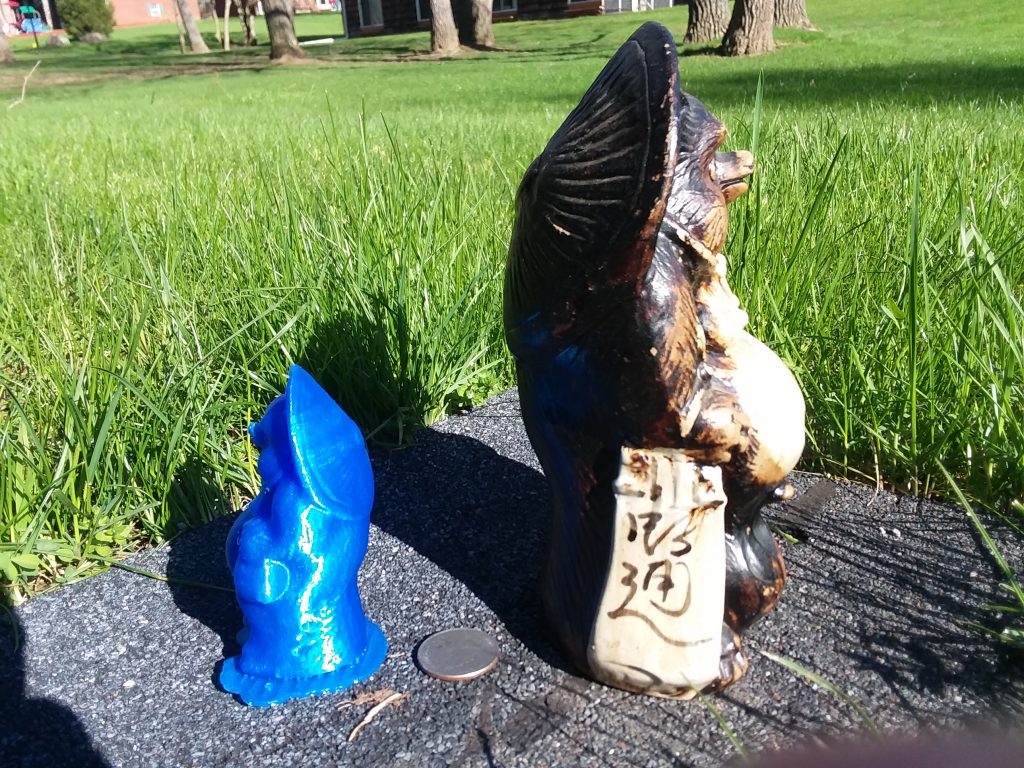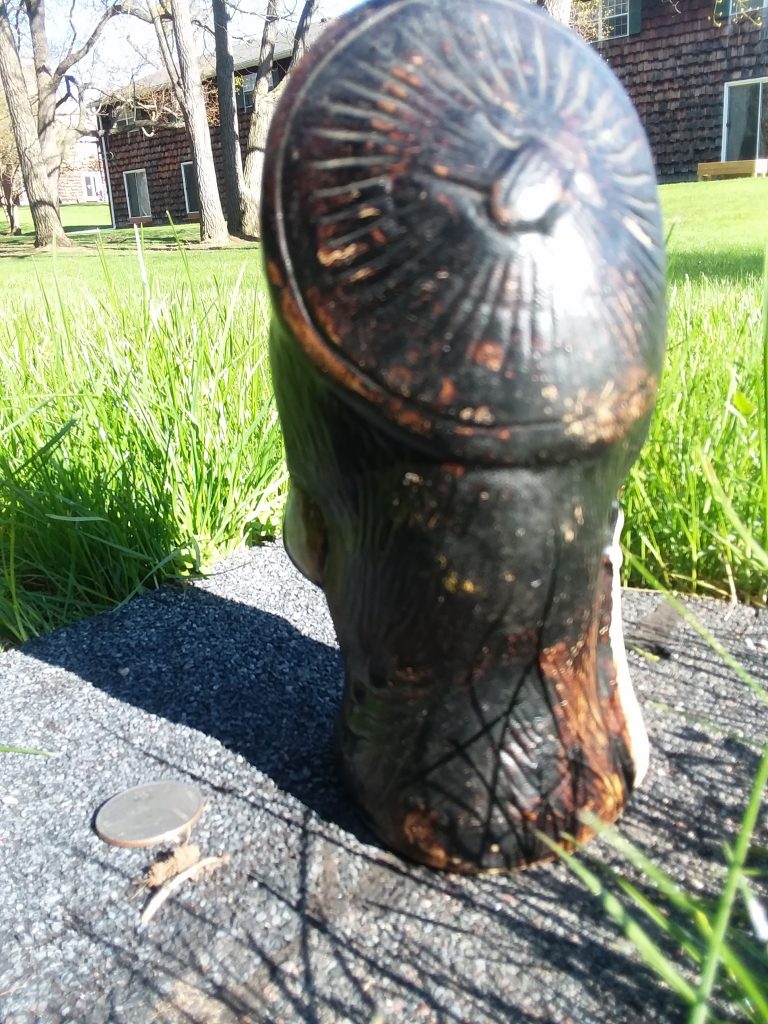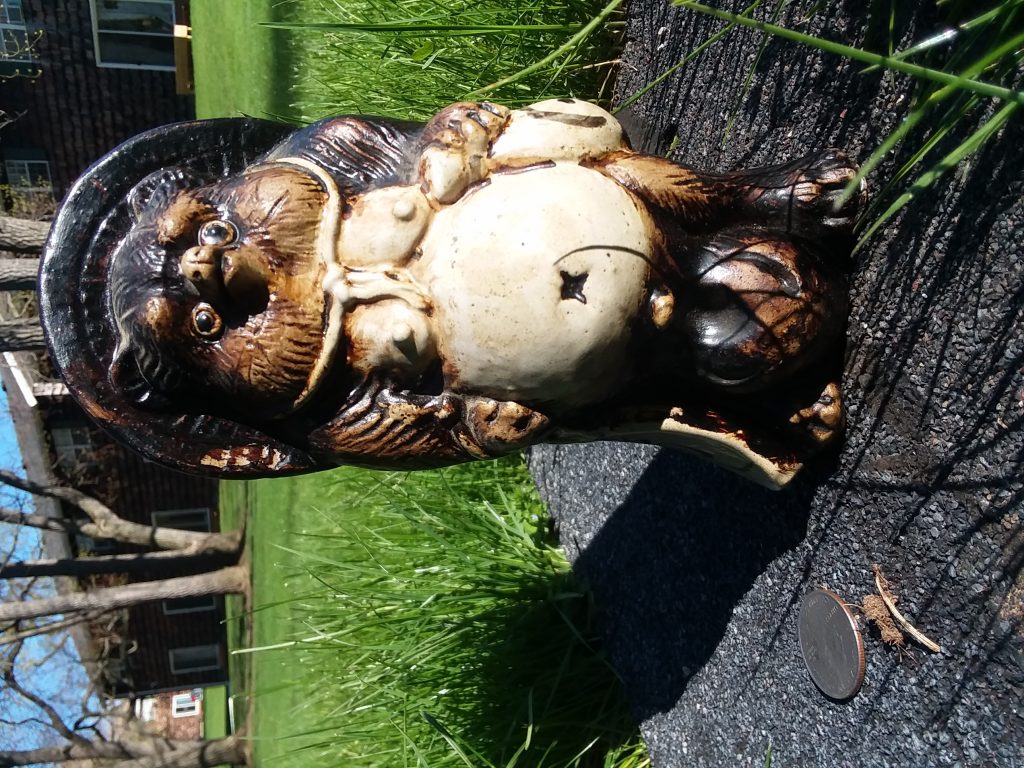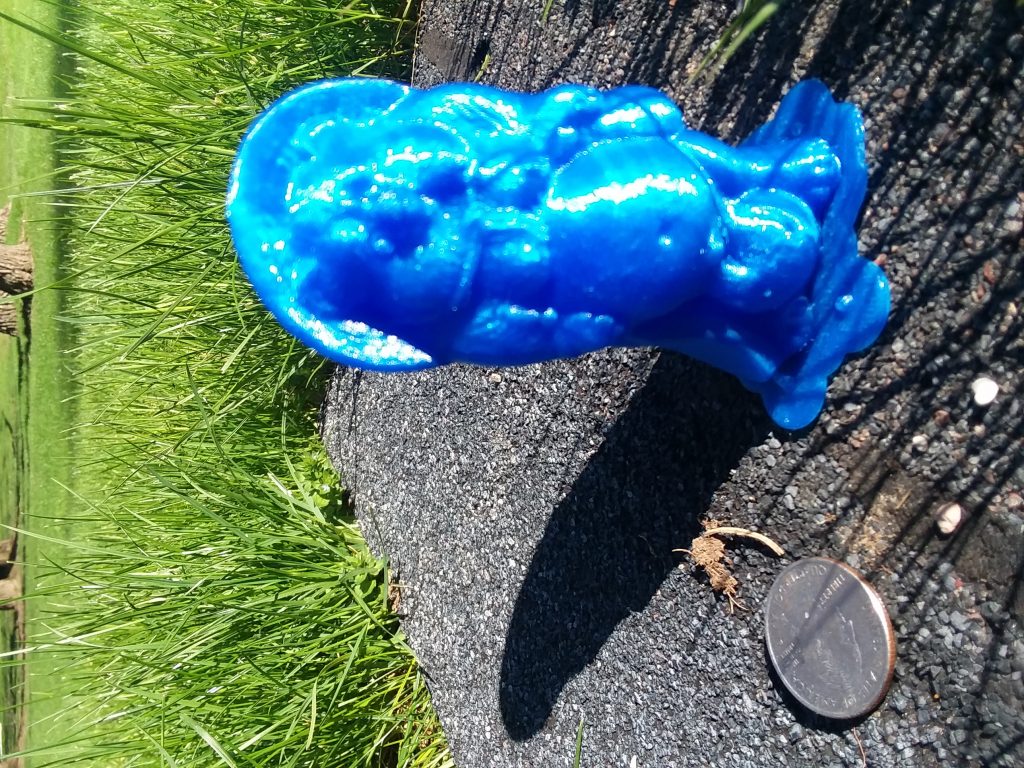The three-dimensional imaging (and software) portion of the course was our favorite part of the portfolio project, and ultimately what Farren and I decided to focus our research on. The results were very rewarding!
Baby Steps – Learning to Scan with Artec
Before we scanned our selected objects, we attempted to capture an object we encountered in the Lazarus lab – the puffer – because it was close-at-hand and we knew that it was possible to scan this object, (as Sam had demonstrated his Artec 3D model of the puffer to class.)
After multiple scans we tried to remove some of the outlying “noise” around each scan model, and then to stitch the edited scans together. What resulted, however, was an “unresolved mesh” (to put it euphemistically) or a “botch-job” (to put it more directly.) This was likely due to not removing enough of the noise, as indicated by the rippling in the mesh around its outer extremities.
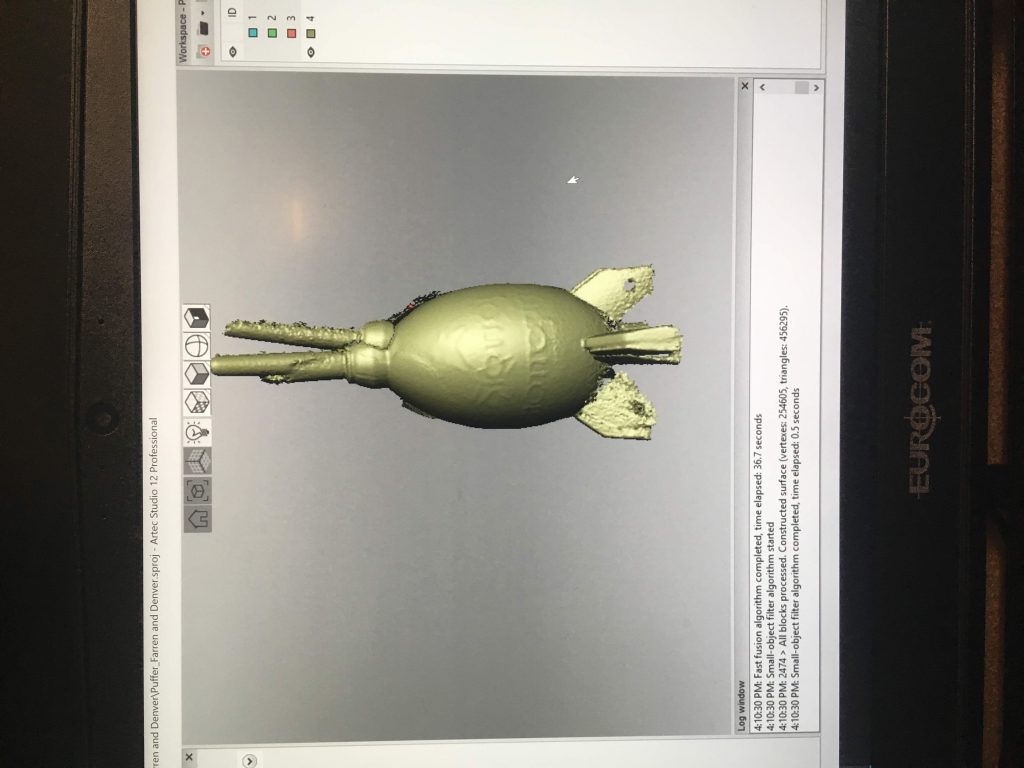
It was, however, useful to make mistakes, so as to learn how to avoid them in the future.
Wonder Woman Funko Pop
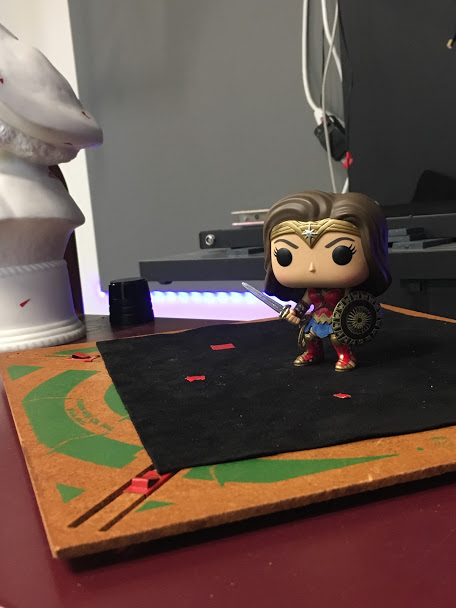
For this stage – the first leg of our 3D endeavors – we attempted to scan the titular figure (belonging to a friend of Farren’s, but generously lent for the occasion.) The intricacy of the design and the exaggerated dimensions of the figure presented a challenge to our novice abilities. We were not sure how it would turn out, especially given the complex details that needed to be captured.
After much scanning, Farren edited out the “noise from the scans…

Here Farren is removing the “noise produced during scanning 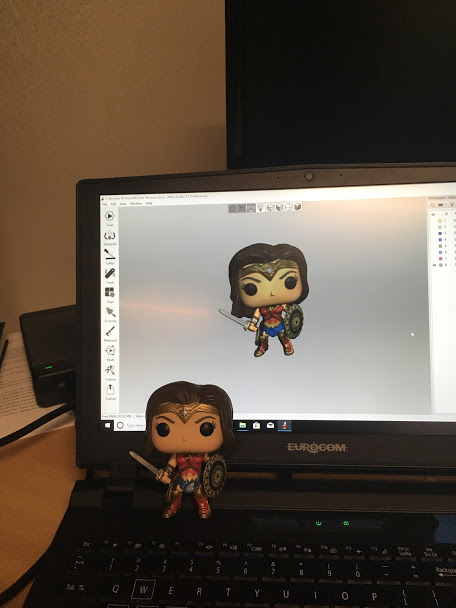
Look how well it turned out – thanks to Farren’s editing!
Farren’s next step was to 3D print her images – but I will let her describe that! Below is the penultimate result (before Farren printed her creation): an excellent 3D model of the Funko Pop! Notice that even the manufacturing details on the underside of the figurine’s chin are visibly rendered.
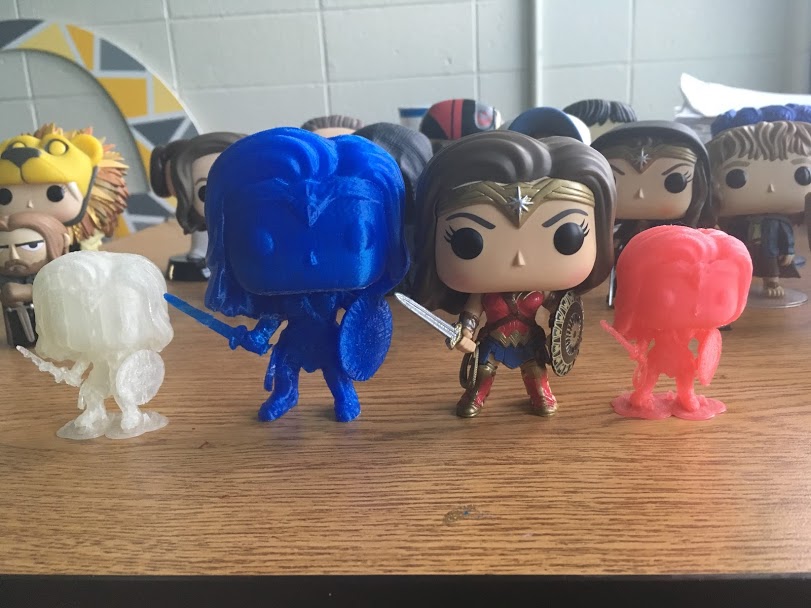
Tanuki-San:
Tanuki is a canid indigenous to Japan. In Japanese folklore, the tanuki is depicted as a anthropomorphic shape-shifter with apotropaic qualities. The tanuki is often depicted with a sack of sake (representing virtue), a contract (representing security and trust), enormous testicles (which represent – among other things – good luck), and a big protruding belly (representing prosperity.)

In a second-hand store a few years ago, I came across a curious statuette of the antropomorphized tanuki, with bulging beady eyes (and yes, the other bulging features mentioned above.) The object had a curious – if not disjunctive – presence, a strange piebald texture, alternatively glossy and matte.
For a couple of years, tanuki-san had an uneasy alliance with the other items on my desk. His cock-eyed gaze surveyed my room and – not normally superstitious – I found myself perching him in places of prominence so as to avoid compromising his benedictions or diminishing his status. Why did I presume a numen or fetish to this object, when I would most liberally describe myself as skeptical in all matters spiritual or religious? Was my attribution of a subjective quality to this object simply a result of me “orientalizing” outside of my cultural milieu? An act of cultural appropriation? Or did a kind of mystery inhere to the object itself, perhaps because it was “second-hand”, despite my never knowing who originally owned it? These questions were in the back of my mind whenever I viewed the object; and it was this inconclusive fascination with the statuette that drove me to include it in my imaging project.

A tanuki statue in Japan – notice the identifying traits and accouterments
(Image accessed at:
https://www.meanwhile-in-japan.com/wp-content/uploads/2009/02/tanuki.jpg)
The tanuki is often described as resembling a raccoon.
(Image accessed at
https://animals.net/tanuki/)
When I decided to focus on 3D scanning, the tanuki statuette immediately popped into my head. I knew its awkward dimensions, its inconsistent texture, its dark tones, and the reflective nature of some of its surfaces would present a challenge for scanning,
but I was fascinated with the idea of reproducing it numinous quality – or rather seeing if this was even possible! Creating a digital – or another physical – copy of the object would hopefully provide some answers!
First Steps – scanning the Tanuki proved even more challenging than I suspected. An entire days work was spent producing inadequate scans and the resultant “poor scan quality” error message when I attempted to create a mesh. I had to start from scratch on a different day… but as with our earlier scanning errors, this was a learning experience.
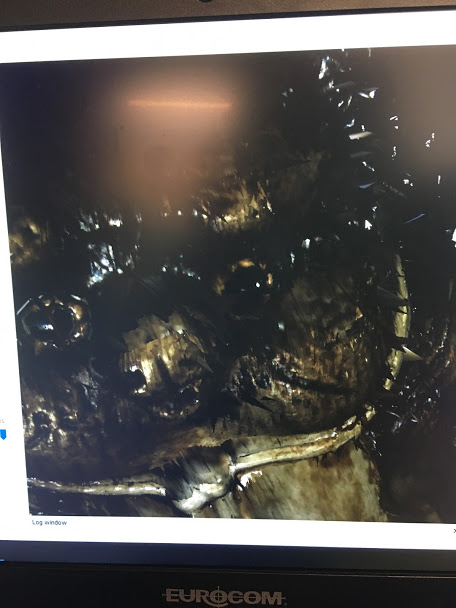
“Look on my Works, ye Mighty, and despair!”
Scanning Problem – and Solution
I realized that the issue was basically with scanning the darker, matte textures, especially on tanuki’s backside and base. I resolved this issue by hovering the Artec Spider over the problem-areas for an extended period of time. Fortunately, this worked quite well I was able to piece together a mesh from six scans. Farren’s experience modelling the Wonder Woman figurine taught me that the extensive removal of “noise” with the “eraser” tool was conducive to creating a high-quality model; and so I adopted her method by “shaving” the outlying “fuzz” off of the scan meshes.
The result was extremely pleasing! The only hiccup was a small perforation in the back of the model, where I had “shaved” too close to the outline. (However, this was easy rectified by using the “watertight” function in the Artec studio.)
Shapeshifting the Shapeshifter – 3D Printing Tanuki
For my final step, I opted to 3D print my tanuki model. What better homage to the polymorphous trickster than to mold his likeness out of plastic, that most malleable of materials?
First the Artec model had to be converted to a usable file, then scaled-down to fit the size of the printer in the Rettner lab.
Because of the cheap cost of printing, I decided to print two versions of tanuki – why not?
Conclusion: It remains to be seen if the copies of the tanuki impart the same “numen” as their original. They seemed to command some presence, but the blue material seemed to lend a kind of sprightliness to the figure that its larger originator did not possess.
In any case, I am proud of my creation and felt that it was meaningful in some – as yet undefined – sense. At least I don’t feel as though I’ve violated some sacrosanct taboo. One of the copies I made currently resides in my boyfriend’s apartment. (He has suggested to me that it may grace his tarantula habitat of all things!)
